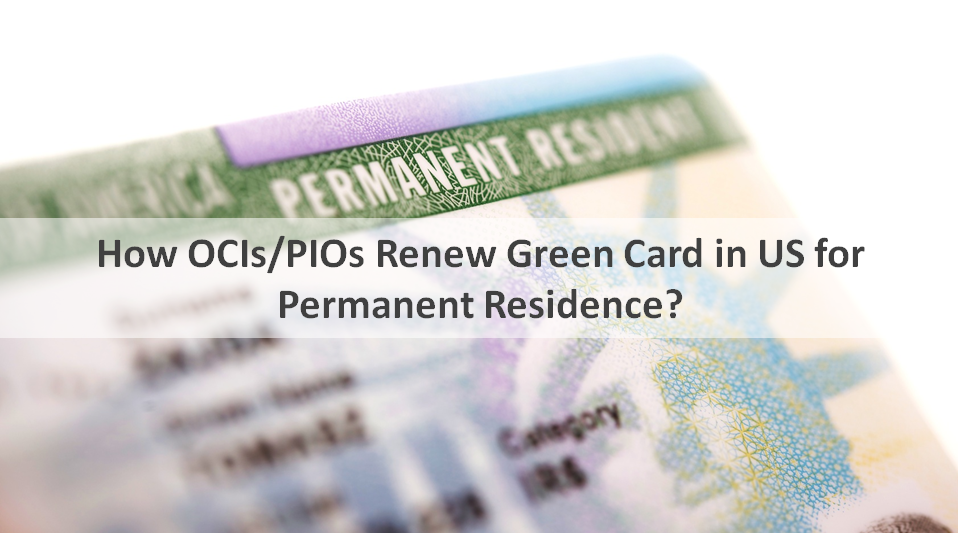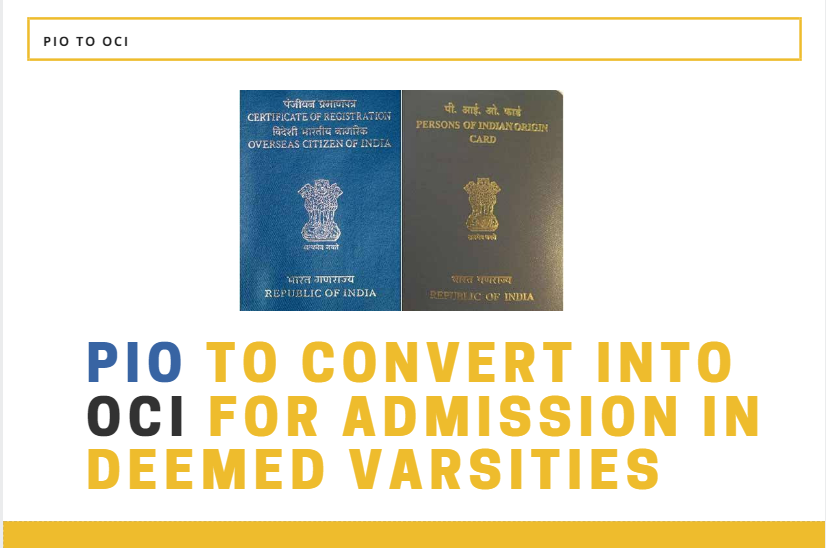
FEMA Tax Rules for OCI Holders Who Return from the US
Over 85K Indians apply for the visa of the US. This number of visa applicants is increasing year after year.
The taxation rules for Indians living in the USA are applicable as per the residency status. Like goers, there are non-residents of India, including OCI card holders & PIOs who return temporarily or permanently.
This blog defines how taxation rules are applied to them.
NRIs, including OCIs and PIOs in the USA Vs NRIs in India
According to US tax laws, migrants or non-residents are classified as aliens. A migrant who is not a US citizen becomes a “Resident Alien” if he or she attains permanent residency or successfully appears through the substantial presence test.
Here in India, Foreign Exchange Management Act (FEMA) recognises a person resident in India (who stays here for 182 days or more) and a person resident outside India, covering NRIs, OCIs, and PIOs.
Treatment of Person Resident Outside India in India
Those who have obtained a green card in the US are categorised as a Person Resident Outside India.
Since they stay outside India for an uncertain period, their existing Indian bank accounts (covering joint accounts) are turned into Non-Resident (Ordinary) or NRO accounts. This status enables them to remit foreign income into this bank account to receive it in Indian currency, i.e. INR.
But, they won’t allow repatriation to accounts overseas. On the flip side, NRIs have a right to remit up to $1 million overseas every FY from this account.
There is another account called Non-Resident (External) Account or NRE, which NRIs can have for depositing their income to use in India or abroad.
How does the Indian Taxation Act Treat Indian Migrants?
According to Indian Taxation rules, any India shifting to the USA is treated as a Resident & Ordinarily Resident (ROR), a Resident but Not Ordinary Resident (RNOR), and Non-Resident (NR).
The NR is the one who has been here for 182 days or more in India. Or, he should have been here for 365 days in the immediate four preceding years. Or, it can be 60 days more in the relevant financial year.
Once it is confirmed that the person is a Resident, further categorization (which is into ROR or RNOR) takes place under the law.
If one is categorised as ROR, his global income shall be taxable. On the other hand, RNOR and NR can enjoy the benefit of paying tax on only India-sourced income. Out of these two, only NRI can file for an Income tax return if being taxed on India-sourced income.
A person shifted to the US will be treated as a non-resident, supposing that his stay in India does not exceed 182 days. In this case, he shall have to pay tax in India only. It will be on the Indian-sourced income.
If an Indian migrant receives a salary in an Indian bank account while working in the US, no tax will be applicable. It is clearly because he received it in India.
Different Treatment of Status as per Domestic Law
This happens when the person attains citizenship in both countries. Typically, the tax shall be paid to the resident country. But technically, both countries impose a tax on international income.
But, this may arise the problem of double taxation. It can be administered through a “Tie Breaker Rule”. India and US Double Taxation Avoidance Agreement allow it.
If a person returns to India and remains a resident alien, the US rules will be applicable. It won’t matter if he lives here or in the USA because his income will be treated as global income. It is subject to the US income tax.
If the returned person from the US holding its citizenship and have a financial interest in or signatory or any operating authority over multiple financial accounts located outside the USA, plus the aggregate amount in all foreign financial accounts is $10,000+ at any time during the financial year, he has to file FBAR (Report of Foreign Bank and Financial Accounts) in addition to the FATCA (Foreign Account Tax Compliance Act) requirements.
The exchange control requirements in India ensure designating NRO, NRI accounts to those who want to stay here for an uncertain period.
In that case, he will have to file an ITR upon being here in India. In the case of ROR, only the global income is taxable. Such residents shall claim the foreign tax credit for the tax paid in the USA. To get this benefit, the ROR (but not RNOR and NR) has to share detailed reports of foreign bank accounts and assets in the ITR. In case he does not share, he shall be penalized worth INR 10 lakhs under the Black Money & Imposition of Tax Act 2015, which is for undisclosed foreign income & assets.





 this is link
this is link